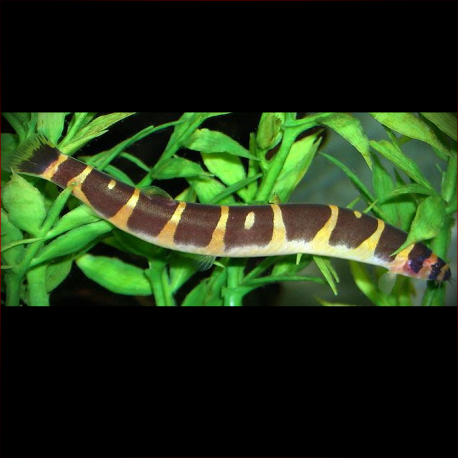More info
Datasheet
| Minimum Tank Size | 60 litres / 15.85 US gallons |
| Maximum Size | 10.0cm / 3.94inches |
| Temperature | 21°C / 69.80°F - 26°C / 78.80°F |
| Hardness | 0.00dgH / 0ppm - 8.01dgH / 143ppm |
| pH | 3.5-7.0 |
Behaviour:
Pangio spp. exhibit peaceful behavior both amongst themselves and with other fish species, with no observed instances of aggression towards tankmates, although they may consume eggs or fry. These loaches tend to congregate in large groups in their natural habitat and display a tendency to cluster together in caves or crevices when resting in captivity. It is recommended to keep a minimum of 5-6 individuals to promote their natural behavior. Suitable tankmates include small, peaceful species such as Boraras, Sundadanio, and certain Rasbora species, while sand-dwelling loaches from the Nemacheilidae family can also be compatible, provided adequate research is done to avoid overly competitive or aggressive species.
Feeding and Diet:
Pangio spp., including the Pangio Semicincta, primarily feed on small organisms sifted from the substrate, such as insect larvae and crustaceans. Their diet also includes organic detritus and plant material from the gut contents of their prey. In captivity, they can be fed sinking dried foods alongside live or frozen options like Daphnia, Artemia, bloodworms, and micro worms to ensure a balanced diet that mimics their natural feeding habits.
Reproduction & Dimorphism:
Limited information is available on the reproduction of Pangio Semicincta, with vague reports suggesting seasonal spawning behavior. Adult females typically exhibit a heavier, larger body compared to males, while mature males can be distinguished by the thickened and branched first pectoral fin ray.
Habitat and Distribution:
Pangio Semicincta, commonly known as the "Kuhli" Loach, is typically found in shallow, slow-moving forest streams, swamps, and backwaters, often associated with peat swamps containing black or tannin-stained water. Their habitats are shaded by vegetation, with substrates ranging from peat to sand and mud, where the fish seek cover in leaf litter piles. The species is distributed across Peninsular Malaysia, Sumatra, and Borneo, with variations in color patterns within populations suggesting the presence of closely-related taxa and distinct genetic lineages.
Aquarium Setup:
To replicate their natural habitat effectively, provide Pangio Semicincta with a soft, sandy substrate to facilitate digging behavior and prevent stress or injury. Incorporate driftwood, branches, and dried leaf litter to create hiding spots and mimic their native environment. Dim lighting, gentle filtration to avoid high flow rates, and tank covers to prevent jump-related accidents are recommended. Aquatic plants like Microsorum, Taxiphyllum, and Cryptocoryne can be included, ensuring small individuals cannot access filter intakes. Water conditions should fall within a pH range of 3.5-7.0, hardness of 0-143ppm, and a temperature range of 21-26°C.

